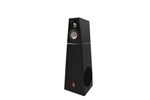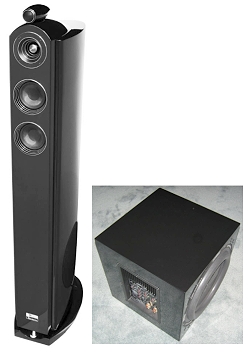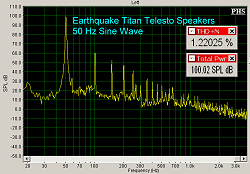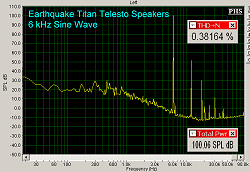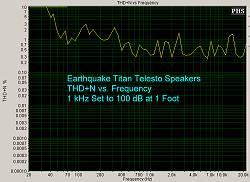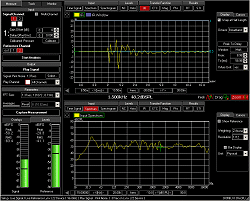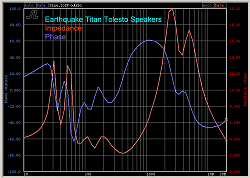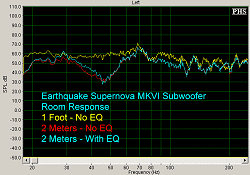Introduction
One of the tenets of running a business is that you want to grow in size, number of products, types of products, and therefore, aim the financial arrow in the upward direction.
For subwoofer companies, the natural thing to do is to add speakers to your product line. After all, subwoofers are meant to be played by themselves. They go with, you guessed it, speakers.
So, as you have probably noticed when browsing the Internet, or reading the various audio magazines, subwoofer companies have been adding speakers to their product array.
Earthquake Sound has offered speakers for several years, and true to the Earthquake concept, some of them are very large. However, the trend these days is to have speakers with a small footprint and narrow view from the front. This means a couple of things. One is that they are deeper than they are wide, especially if there is a decent sized woofer in the enclosure, which is then mounted on the side. This is the case for Earthquake’s new Titan Telesto speakers.
Specifications : Titan Telesto Speakers
- Design: Floor-standing, Four-way, Sealed Enclosure
- Drivers: One 1″ Silk Dome Tweeter, One 1.25″ Horn-loaded Silk Dome Tweeter, Two 4″ Carbon Fiber Midrange, One 8″ Woofer
- MFR: 20 Hz – 40 kHz
- Nominal Impedance: 4 Ohms
- Sensitivity: 88 dB/m/2.83v
- Power Handling: 500 Watts
- Dimensions: 50″ H x 7.7″ W x 18.3″ D
- Weight: 68 Pounds/Each
- MSRP: $4,999/Pair USA in Black Piano Finish
Specifications : Supernova MKVI 10″ Subwoofer
- Design: Sealed Enclosure
- Drivers: One 10″ Active, One 12″ Passive Radiator
- Amplifier: 600 Watts RMS, Class D
- MFR: Down 2 dB at 20 Hz, Down 4 dB at 15 Hz
- Inputs: XLR and RCA
- Dimensions: 16″ H x 16″ W x 18″ D
- Weight: 70 Pounds
- MSRP: $2,399 USA in Black Ash Wood Veneer
- Earthquake Sound
The Design
The Telesto speakers are a four-way sealed enclosure design. What is unique about them is that there are two tweeters. The top one is a conventional 1″ silk dome design, mounted in its own enclosure, and the second tweeter is horn-loaded. Together, they deliver the high frequencies, with the horn-loaded tweeter handling the lower portion of the highs, and the top tweeter extending to 40 kHz. Two 4″ midrange drivers and an 8″ side-mounted woofer round out the driver array. The horn-loaded tweeter has a wave guide that is shaped like a pointed cone.
The enclosure is egg-shaped so as to reduce standing waves, and on the rear panel, there are two sets of binding posts for bi-amping.

The MKVI subwoofer reviewed here is the 10″ version of the sub we reviewed in March, which uses a 15″ driver. It has the same amplifier and amplifier controls, including three EQ bands (20 Hz, 30 Hz, and 40 Hz). The 10″ sub is $600 less than the 15″ version. It’s also smaller, and I suspect this might be a major factor in choosing it for purchase, as “smaller” seems to be the buzzword these days. The trick for subs though is getting lots of air moving at low frequencies in small enclosures. Earthquake solves this problem by using long throw drivers, with one of them being a massive passive radiator. In the larger sub that we reviewed, both the active driver and passive radiator are 15″ in diameter. With the 10″ sub reviewed here, the active driver is 10″, while the passive radiator is 12″. That is why it is named the MKVI-12.
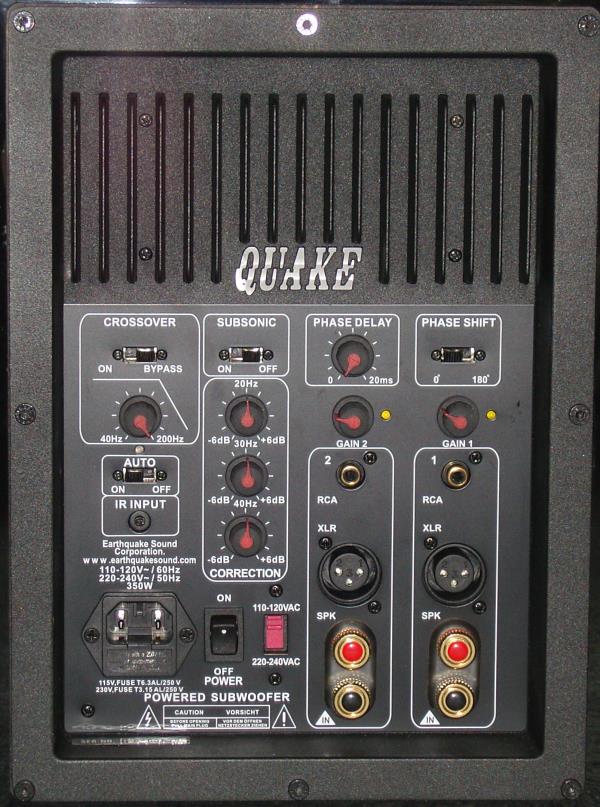
In Use
I tested the Earthquake speakers and subwoofer with a Marantz SA-7S1 SACD player, BAT VK-5i preamplifier, and McIntosh MC-1201 power amplifiers. Cables were Legenburg.
The human voice is not more difficult to reproduce than any other sound, it is just that we are more likely to notice whether or not the voices sound natural. The Telestos defintely have a neutral tonality to them, and this comes across as sounding “natural”, such as with this EMI disc from the boy’s choir group Liberia, called New Dawn (5-099951-935405). The group sings primarily a cappella (without accompanying instruments), so if there were a problem with the speakers being slightly chesty, or too sibilant, it would show up here. It didn’t show up. Since these are children, their voices are in the upper registers, and I think that spreading out the high frequency duties between the two tweeters helps in this regard.
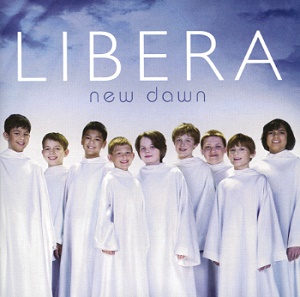
Putting the Supernova MKVI in the circuit (the preamp has two sets of outputs) gave me the required subterranian punch that the cannons have in the Telarc version of Tchaikovsky’s 1812 Overture (Telarc SACD-60541). So, while the MKVI was thundering away, the violins and brass were dealing out the triumphant climax to this musical masterpiece through the Telestos. The 8″ woofer on the sides of the Telesto speakers is sufficicent for most bass, but not the cannons in this overture. Actually, all speakers benefit from a dedicated subwoofer, and I was really surprised at what the MKVi could do in such a relatively small enclosure.
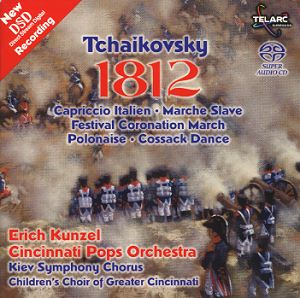
Ah, those Russians loved their big music didn’t they? Stravinsky’s The Firebird is not something you will likely hear as background music in the supermarket. This is a piece for your home audio system to handle. This version (NAXOS 6.110081) didn’t disappoint me, and neither did the Earthquake speakers and subwoofer. When you can get music to sound like this, it just makes one’s hair stand on end.
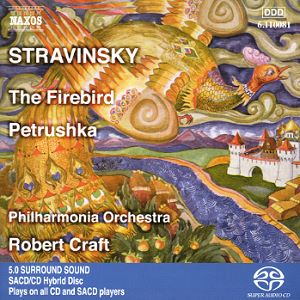
Kind of Blue (Columbia) is the best selling jazz album of all time. It first arrived on LP decades ago, and has been re-issued on CD as well as SACD. I have all three versions. For the review, I used the SACD. At this point, I was so pleased witht the sound of the Telestos, I just sat back and listened for its musical entertainment value rather than trying to dissect the quality of the sound.
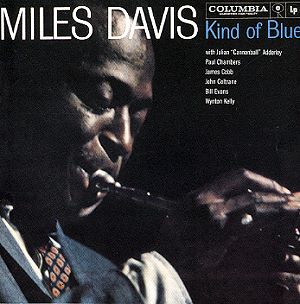
In sum, I have nothing to complain about with these speakers. They’re expensive, but not outrageously so. I have speakers that will play louder, but they are also six feet tall and have four 12″ woofers in each speaker. The Telestos are meant to deliver high quality, neutral sound, without an overpowering enclosure. They are full range speakers, but I always recommend a subwoofer as part of any audio system.
On the Bench
As you can see from the following four graphs, taken 1 foot from the subwoofer, midrange drivers, mid-tweeter, and upper tweeter respectively, THD+N is low throughout, especially in the mid-upper frequency area (6 kHz).
Plotting THD+N vs. Frequency at 1 foot from the middle of the speaker, and setting 1 kHz to be at 100 dB, I obtained the following graph. Distortion stays generally in the 1% range.
The quasi-anechoic frequency response is shown below. The response is reasonably flat, and measuring at 300 off axis showed attenuation above 4 kHz. With Audyssey Room EQ and other powerful room RQ being more and more a standard feature in receivers, the native frequency response is becoming less of an issue.
Here are the Impedance – Phase measurements for the Telestos. They have an impedance low of 2 ohms and a high of 20 ohms. Phase is ± 600. This is a speaker that should probably not be used with mass market receivers, but rather, with amplifiers that can handle low impedance loads. The review unit was an early version, and Earthquake informed me that the production units max out at 10 ohms.
For the Supernova MKVI subwoofer, the room response with and without EQ is shown in the first graph, and THD+N vs. Frequency is shown in the second graph. You can see that even with three EQ bands, this is not enough to flatten the response at 2 meters. Many of the manufacturers are moving to software based EQ control in subwoofers, which provides a much larger number of EQ points.
Distortion is pretty reasonable down to about 35 Hz. Not quite the performance we saw with the 15″ version of this subwoofer, but I didn’t expect it to be.
Conclusions
With computer modelling for speaker design being so sophisticated these days, one almost has to go out of their way to build a lousy speaker. This is really terrific for consumers who have not listened to lots of speakers for comparison and who don’t really know much about speakers, only that they want some good ones.
The Earthquake Titan Telesto speakers are unusual in that they have two tweeters dividing the high frequencies between them. The result is extra detail and clarity, which makes this product especially worthy of auditioning if you are in the market. The Supernova MKVI subwoofer tested here is the smaller of the two that we have reviewed, yet it still is able to deliver plenty of deep, powerful, clean bass.


